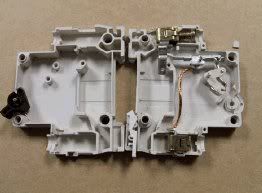On Boxing Day, we had visitors sleeping in a room in a rarely-used corner of the house. When they switched on the light, there was a loud bang (‘explosion’’) and it transpired that the entire glass envelope of a 25W incandescent candle bulb/lamp had fallen, blackened but physically intact, onto the bed below. The power to that part of the house immediately ‘died’.
The B6 MCB in the local CU protecting the lighting circuit did not operate. However, the 60A BS1361 serving the sub-main in question did 'blow'.
This could possibly be a fairly extreme case of non-discrimination. Alternatively, the B6 may have become faulty and hence failed to do what it says on the tin. Given that the MCB functionality cannot be tested (it still works OK with manual operation of its lever), my inclination is to replace it, on the grounds that it may have become faulty/non-functional and, even if it hasn’t, it may possibly have suffered as a result of what must have been a pretty hefty fault current. What would others do?
The RCD in the local CU (which was protecting the lighting circuit in question) still tests fine - so probably hasn’t suffered from the experience.
Kind Regards, John
The B6 MCB in the local CU protecting the lighting circuit did not operate. However, the 60A BS1361 serving the sub-main in question did 'blow'.
This could possibly be a fairly extreme case of non-discrimination. Alternatively, the B6 may have become faulty and hence failed to do what it says on the tin. Given that the MCB functionality cannot be tested (it still works OK with manual operation of its lever), my inclination is to replace it, on the grounds that it may have become faulty/non-functional and, even if it hasn’t, it may possibly have suffered as a result of what must have been a pretty hefty fault current. What would others do?
The RCD in the local CU (which was protecting the lighting circuit in question) still tests fine - so probably hasn’t suffered from the experience.
Kind Regards, John



